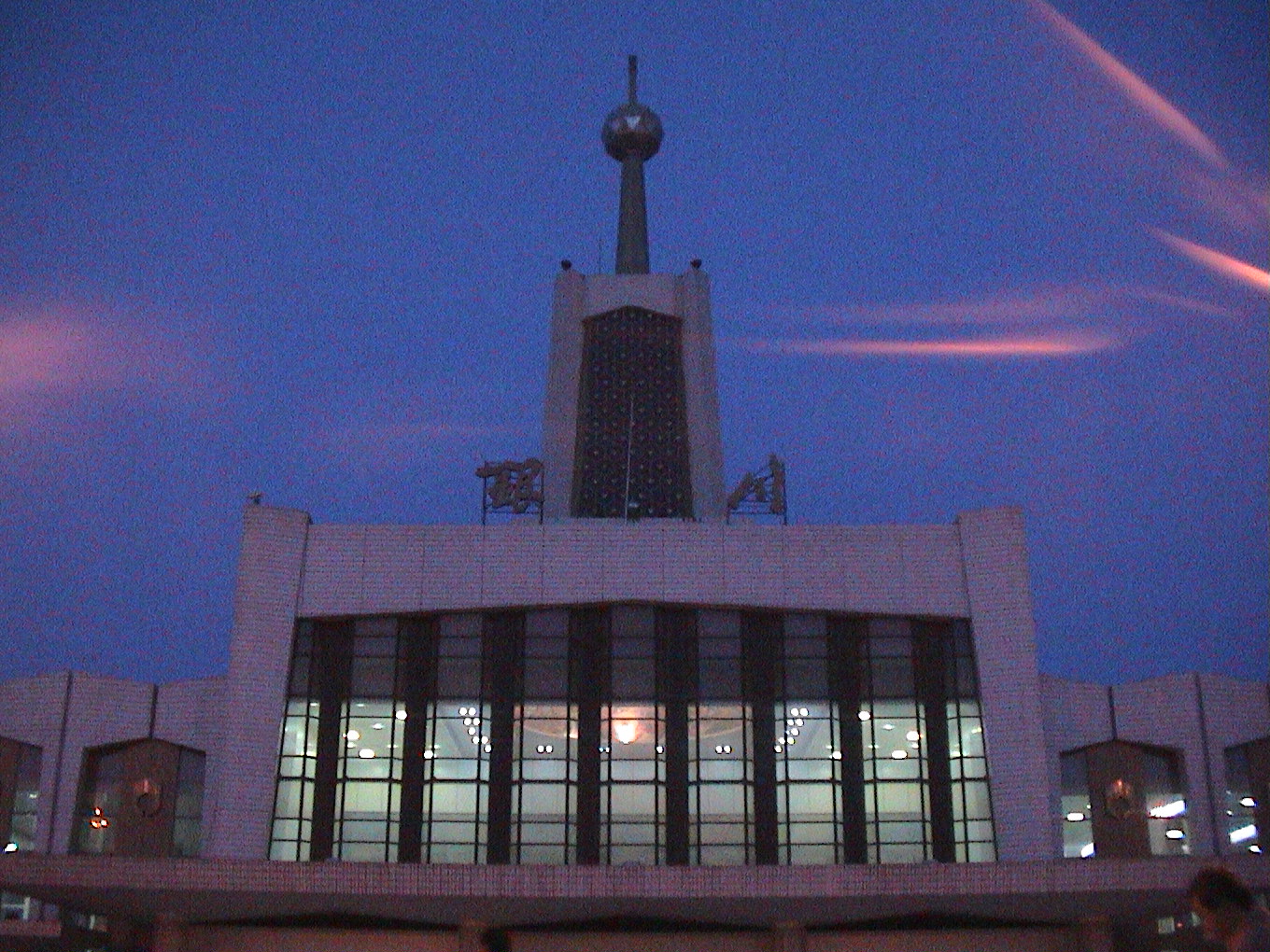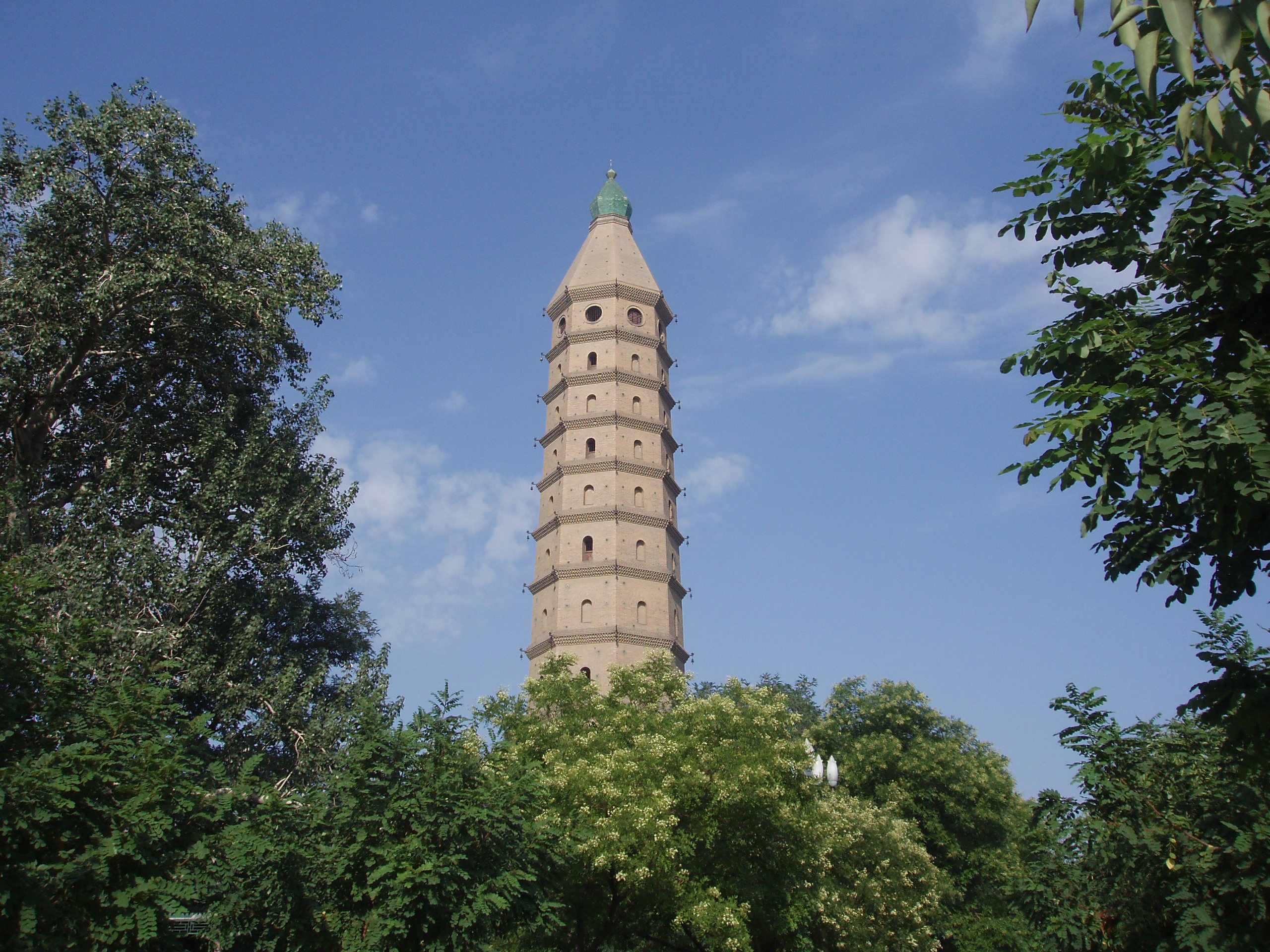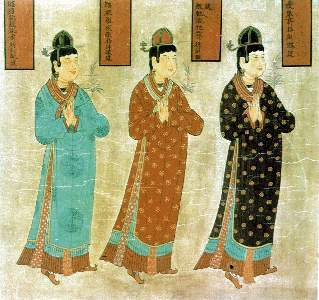|
Yinchuan
Yinchuan (, ; ) is the capital of the Ningxia Hui Autonomous Region, China, and was the capital of the Tangut-led Western Xia dynasty. It has an area of and a total population of 2,859,074 according to the 2020 Chinese census, and its built-up area was home to 1,901,793 inhabitants spread between three urban districts. The city's name literally means "silver river". Yinchuan is now the permanent site for the China-Arab Expo, a platform for cultural and economic exchanges between China and Arab countries. The city is also home to Ningxia University, the largest regional comprehensive university under the Project 211 in Ningxia Hui Autonomous Region. History Yinchuan was originally a county under the name of ''Fuping'' in the 1st century BCE; its name was changed to ''Huaiyuan'' in the 6th century CE. Western Xia After the fall of the Tang dynasty in 907, it came under the control of the Tangut-led Western Xia dynasty and was made the capital of the empire, provoking muc ... [...More Info...] [...Related Items...] OR: [Wikipedia] [Google] [Baidu] |
Yinchuan Municipal People's Congress
Yinchuan (, ; ) is the capital of the Ningxia, Ningxia Hui Autonomous Region, China, and was the capital of the Tangut people, Tangut-led Western Xia, Western Xia dynasty. It has an area of and a total population of 2,859,074 according to the 2020 Chinese census, and its built-up area was home to 1,901,793 inhabitants spread between three urban districts. The city's name literally means "silver river". Yinchuan is now the permanent site for the China-Arab Expo, a platform for cultural and economic exchanges between China and Arab world, Arab countries. The city is also home to Ningxia University, the largest regional comprehensive university under the Project 211 in Ningxia Hui Autonomous Region. History Yinchuan was originally a county under the name of ''Fuping'' in the 1st century BCE; its name was changed to ''Huaiyuan'' in the 6th century CE. Western Xia After the fall of the Tang dynasty in 907, it came under the control of the Tangut people, Tangut-led Western Xia ... [...More Info...] [...Related Items...] OR: [Wikipedia] [Google] [Baidu] |
Ningxia
Ningxia (,; , ; alternately romanized as Ninghsia), officially the Ningxia Hui Autonomous Region (NHAR), is an autonomous region in the northwest of the People's Republic of China. Formerly a province, Ningxia was incorporated into Gansu in 1954 but was later separated from Gansu in 1958 and reconstituted as an autonomous region for the Hui people, one of the 56 officially recognised nationalities of China. Twenty percent of China's Hui population lives in Ningxia. Ningxia is bounded by Shaanxi to the east, Gansu to the south and west and Inner Mongolia Autonomous Region to the north and has an area of around . This sparsely settled, mostly desert region lies partially on the Loess Plateau and in the vast plain of the Yellow River and features the Great Wall of China along its northeastern boundary. Over about 2000 years an extensive system of canals (The total length about 1397 kilometers) has been built from Qin dynasty. Extensive land reclamation and irrigation projec ... [...More Info...] [...Related Items...] OR: [Wikipedia] [Google] [Baidu] |
Ningxia Hui Autonomous Region
Ningxia (,; , ; alternately romanized as Ninghsia), officially the Ningxia Hui Autonomous Region (NHAR), is an autonomous region in the northwest of the People's Republic of China. Formerly a province, Ningxia was incorporated into Gansu in 1954 but was later separated from Gansu in 1958 and reconstituted as an autonomous region for the Hui people, one of the 56 officially recognised nationalities of China. Twenty percent of China's Hui population lives in Ningxia. Ningxia is bounded by Shaanxi to the east, Gansu to the south and west and Inner Mongolia Autonomous Region to the north and has an area of around . This sparsely settled, mostly desert region lies partially on the Loess Plateau and in the vast plain of the Yellow River and features the Great Wall of China along its northeastern boundary. Over about 2000 years an extensive system of canals (The total length about 1397 kilometers) has been built from Qin dynasty. Extensive land reclamation and irrigation projects ha ... [...More Info...] [...Related Items...] OR: [Wikipedia] [Google] [Baidu] |
Yinchuan Railway Station
Yinchuan railway station () is the main railway station of Yinchuan, the capital of China's Ningxia Ningxia (,; , ; alternately romanized as Ninghsia), officially the Ningxia Hui Autonomous Region (NHAR), is an autonomous region in the northwest of the People's Republic of China. Formerly a province, Ningxia was incorporated into Gansu in ... province. The station was opened in 1958. In 1988, a new station building was inaugurated, which was replaced in 2011 by a building on the opposite (eastern) side of the platforms. References Stations on the Longhai Railway Railway stations in Ningxia Railway stations in China opened in 1958 Transport in Ningxia {{Ningxia-railstation-stub ... [...More Info...] [...Related Items...] OR: [Wikipedia] [Google] [Baidu] |
Pagoda Of Chengtian Temple
The Pagoda of Chengtian Temple (), meaning 'Bearing Heaven Pagoda', is an eleven-storeyed brick pagoda located on the site of a previous Buddhist temple in Yinchuan city, Ningxia, China. The pagoda was originally built during the Western Xia, but the current structure dates to the Qing dynasty. At in height it is the tallest pagoda in Ningxia. In contrast to the Haibao Pagoda in Yinchuan, which is known as the Northern Pagoda, Chengtian Temple Pagoda is also informally referred to as the Western Pagoda (). History The first pagoda was built during the infancy of Emperor Yizong of Western Xia (r. 1048–1068). The text of a commemorative stele marking its construction has been preserved, from which it is known that the Empress Dowager ordered the construction of a pagoda to protect the reign of her infant son, and as a reliquary for housing pieces of head bone of the Buddha.Commemorative stele at Chengtian Temple Pagoda, Yinchuan, dated August 1990. The construction of the pagoda ... [...More Info...] [...Related Items...] OR: [Wikipedia] [Google] [Baidu] |
Jinfeng District
Jinfeng District () is one of three urban districts of the prefecture-level city of Yinchuan, the capital of Ningxia Hui Autonomous Region, Northwest China. It has a total area of , and, according to the 2010 China Census, a population of 282,554 people. Compilation by LianXin websiteData from the Sixth National Population Census of the People's Republic of China Characteristics Jinfeng District has developed industry in recent years. Industry in the district is divided into the New Material Industrial Park, the New High-Tech Industrial Park, the Specialized Medicine Industrial Park, and the Comprehensive Industrial Park. The district forms one of the cores of Yinchuan's industrial economy. The district government is located on East Xinxia Road, and the district's postal code is 750011. In 2006, Yinchuan's city-level government moved from Xingqing District Xingqing District (, Xiao'erjing: ) is one of three urban districts of the prefecture-level city of Yinchuan, the capit ... [...More Info...] [...Related Items...] OR: [Wikipedia] [Google] [Baidu] |
Xingqing District
Xingqing District (, Xiao'erjing: ) is one of three urban districts of the prefecture-level city of Yinchuan, the capital of Ningxia Hui Autonomous Region, Northwest China, bordering Inner Mongolia to the east. It has a total area of , and, according to the 2010 China Census, a population of 678,306 people. Characteristics Xingqing District is the political, economic, scientific, cultural, financial, and commercial center of Yinchuan, the capital city of Ningxia Hui Autonomous Region. The district administers two villages and two towns. Although many Han Chinese live in the district, approximately 85,000 of its residents are of the Hui The Hui people ( zh, c=, p=Huízú, w=Hui2-tsu2, Xiao'erjing: , dng, Хуэйзў, ) are an East Asian ethnoreligious group predominantly composed of Chinese-speaking adherents of Islam. They are distributed throughout China, mainly in the n ... nationality. The district government is located on East Beijing Road, and the district's postal ... [...More Info...] [...Related Items...] OR: [Wikipedia] [Google] [Baidu] |
Western Xia
The Western Xia or the Xi Xia (), officially the Great Xia (), also known as the Tangut Empire, and known as ''Mi-nyak''Stein (1972), pp. 70–71. to the Tanguts and Tibetans, was a Tangut-led Buddhist imperial dynasty of China that existed from 1038 to 1227. At its peak, the dynasty ruled over the modern-day northwestern Chinese provinces of Ningxia, Gansu, eastern Qinghai, northern Shaanxi, northeastern Xinjiang, and southwest Inner Mongolia, and southernmost Outer Mongolia, measuring about . Its capital was Xingqing (modern Yinchuan), until its destruction by the Mongols in 1227. Most of its written records and architecture were destroyed, so the founders and history of the empire remained obscure until 20th-century research in China and the West. The Western Xia occupied the area around the Hexi Corridor, a stretch of the Silk Road, the most important trade route between northern China and Central Asia. They made significant achievements in literature, art, ... [...More Info...] [...Related Items...] OR: [Wikipedia] [Google] [Baidu] |
Ningxia University
Ningxia University () is a public university located in Yinchuan, China. It is co-administrated by Ningxia Hui Autonomous Region and Ministry of Education of the People's Republic of China. It is a member of the former Project 211 and a Chinese state Double First Class University, included in the Double First Class University Plan identified by the Ministry of Education. The school was founded in 1958. In the end of 1997, Ningxia Institute of Technology and Yinchuan Normal College (including Ningxia Education College) were merged into the university. In February 2002, it was merged with Ningxia Agricultural College, and formed the new Ningxia University. It currently comprises three campuses. It consists of more than 2,600 teachers and staff, over 50% of them are formal instructors. More than half of the instructors hold intermediate to senior titles, 52% of them with masters or doctors degrees. 15 teachers receives special subsidies of the State Council, and 17 were elected int ... [...More Info...] [...Related Items...] OR: [Wikipedia] [Google] [Baidu] |
List Of China Administrative Regions By Population Density
The provincial level administrative divisions () are the highest-level administrative divisions of China. There are 34 such divisions claimed by the People's Republic of China, classified as 23 provinces (), five autonomous regions, four municipalities and two special administrative regions. The political status of Taiwan Province along with a small fraction of Fujian Province remain in dispute; those are under separate rule by the Republic of China, which is usually referred to as "Taiwan". Every province on Mainland China (including the island province of Hainan) has a Chinese Communist Party (CCP) provincial committee (), headed by a secretary (). The Committee Secretary is effectively in charge of the province, rather than the governor of the provincial government. The same arrangement exists for the autonomous regions and municipalities. Types of provincial level divisions Province The government of each standard province () is nominally led by a provincial committee ... [...More Info...] [...Related Items...] OR: [Wikipedia] [Google] [Baidu] |
Western Xia Mausoleums
The Western Xia mausoleums occupy an area of some at the foot of the Helan Mountains in the Ningxia Hui Autonomous Region of northwestern China, and include nine imperial mausoleums and 250 tombs of imperial relatives and officials of China's Western Xia dynasty. This burial complex lies some westward from capital city of the Western Xia, the Xingqing fu or Xingqing, what is modern-day Yinchuan, capital of the Ningxia Hui Autonomous Region. Some have so far been excavated, and efforts are underway to secure and preserve the remains of this poorly understood era. History The Western Xia dynasty, existed between 1038 and 1227, when it was conquered by the Mongols under Genghis Khan. The empire was founded by the Tangut ethnic group, about which little is currently known. Of current excavations, only the No.3 mausoleum has been adequately excavated and researched. This mausoleum is attributed to Western Xia's first emperor Jingzong, born Li Yuanhao, (1003-1048), has been dete ... [...More Info...] [...Related Items...] OR: [Wikipedia] [Google] [Baidu] |
Tangut People
The Tangut people ( Tangut: , ''mjɨ nja̱'' or , ''mji dzjwo''; ; ; mn, Тангуд) were a Tibeto-Burman tribal union that founded and inhabited the Western Xia dynasty. The group initially lived under Tuyuhun authority, but later submitted to the Tang dynasty, prior to their establishment of the Western Xia. They spoke the Tangut language, which was previously believed to be one of the Qiangic languages or Yi languages that belong to the Tibeto-Burman family. Phylogenetic and historical linguistic accounts, however, reveal that Tangut belonged to the Gyalrongic languages. Language The Tangut language, otherwise known as ''Fan'', belongs to the Tibeto-Burman branch of the Sino-Tibetan language family. Like many other Sino-Tibetan languages, it is a tonal language with predominantly mono-syllabic roots, but it shares certain grammatical traits central to the Tibeto-Burman branch. It is still debated as to whether Tangut belongs to the Yi or Qiangic subdivision of Tibeto-Burm ... [...More Info...] [...Related Items...] OR: [Wikipedia] [Google] [Baidu] |







